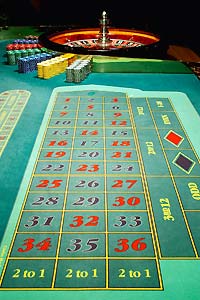
The principle
The Holland Rising is to drop a previous loss with a higher release of one unit at a loss. We will play a bet to erase a loss until the removal thereof. Then we go to erase the loss follows. This is an increase in losses.
We begin as always playing one unit. In case of loss, we will therefore try to erase the loss of a unit with a 2 bet. In case of further loss, we continue to bet 2 to win which will blur the initial loss of 1. Subsequently, we will put as many 3 that loss of 2 to delete, and so on.
When all losses are erased, we are left with a profit of half a piece per move. This rising slowly but can cause far enough.
Example of holland rising :
| Game | Result | Bet | Result | Accumulation |
| Red | Black | 1 | -1 | -1 |
| Red | Black | 2 | -2 | -3 |
| Red | Red | 2 | +2 | -1 |
| Red | Black | 3 | -3 | -4 |
| Red | Red | 3 | +3 | -1 |
| Red | Red | 4 | +4 | +3 |
| Red | Black | 1 | -1 | +2 |
Limitations
The limits are always the same, it is the excitement of being in severe deficit of winners and the achievement of the set ceiling. But this excitement is often more controllable than in the other rising.
In conclusion
The Holland rising can continue to play even in case of deficit hit winners. You have a profit of 1 / 2 unit by winning move if you get the balance between the number of winners and losers in the number of strokes. The rise is being rather slow, it is easier to keep control.


